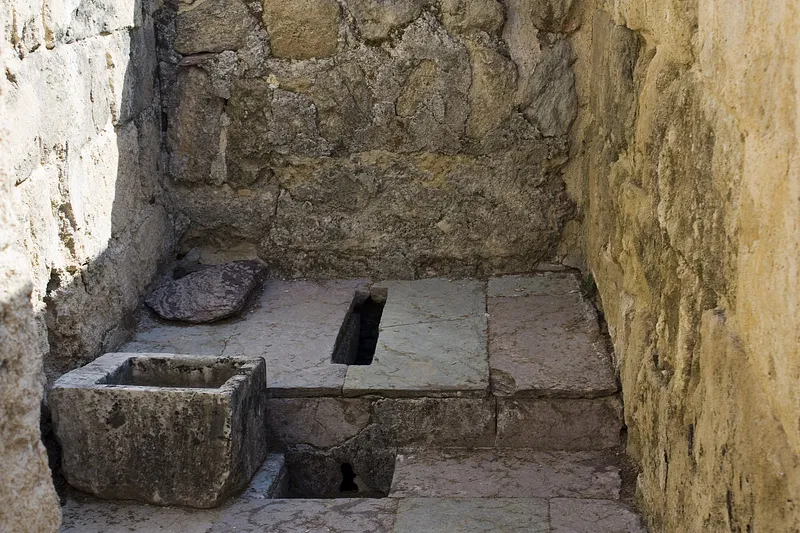BY the time most European cities were still dumping chamber pots into the street, Cordoba was quietly revolutionising urban living.
Between the 10th and 13th centuries, this Andalucian jewel – then the beating heart of the Umayyad Caliphate – pioneered a sanitation system so refined, so seamlessly integrated into civic life, that its sophistication wouldn’t be matched in Europe for another 700 years.
Now, a groundbreaking study by archaeologists Rafael Blanco-Guzman and Jesus Atenciano-Crespillo, recently published in Al-Mas?q: Journal of the Medieval Mediterranean, is shedding light on just how forward-thinking Córdoba really was. Drawing on over 300 archaeological excavations and Islamic-era manuscripts, the research paints a vivid portrait of a city that placed urban hygiene at the very core of its identity – alongside beauty, intellect, and order.
A city beneath the city
At the centre of Cordoba’s sanitary marvel was an extensive and highly engineered sewer system, threading through the ancient Medina like an invisible lifeline. Believed to have been launched under the reign of ?Abd al-Rahm?n III and expanded during the era of Almanzor, the infrastructure was visionary. Constructed from thick ashlar blocks, sealed with lime mortar, and capped with precision-cut stone slabs, the network efficiently whisked wastewater away from the city and into the Guadalquivir River – all quietly, cleanly, and underground.

The level of coordination suggests centralised, possibly even caliphal, oversight – a sign that cleanliness in Cordoba was more than just a personal virtue. It was policy.
Designing for dignity
Inside private homes, latrines and cesspits became common by the 10th century. Unlike many of their European counterparts, Cordoba’s residents enjoyed thoughtfully positioned latrines near streets, linked by ceramic pipes that blended practical engineering with architectural grace. Soil filtration systems ensured groundwater remained untainted. In newly developed suburbs, latrines were part of the original blueprint – a rarity in the medieval world, where sanitation often played catch-up to construction.
In shared courtyards and family compounds, neighbors collaborated on waste disposal logistics, with decisions often made communally and guided by a blend of Islamic legal norms and pragmatic good sense. Cesspits were located carefully, away from water sources, and with full buy-in from everyone affected.
Civic cleanliness as a cultural ideal
Cordoba’s streets didn’t just appear clean – they were. Regulations required that property owners keep the areas in front of their homes spotless, while city officials such as the mu?tasib (market inspector) and the local judge wielded real authority to enforce public hygiene standards. If cesspits became a nuisance or a water source was at risk, the law acted swiftly.
And though the work of cleaning pits and drains often fell to society’s most marginalised, it was not ignored or undervalued. The city paid for it, recognised its importance, and regulated it – an early example of essential labour being both acknowledged and institutionalised.
Legacy in stone (and soil)
Long after the Christian conquest in 1236, Cordoba’s sanitation system continued to function – a silent, subterranean testament to its resilience. Even centuries later, elements of the infrastructure remained operational, astonishing archaeologists with their endurance and elegance.
But perhaps most striking is the cultural legacy left behind. Cordoba’s approach to hygiene wasn’t just technical – it was communal, legal, and deeply ethical. It was a city where infrastructure reflected ideology: where the physical cleanliness of the streets mirrored a societal aspiration toward harmony, order, and public good.
A Medieval marvel, reconsidered
This new research repositions Cordoba as a dazzling outlier in the history of urban planning – a medieval city that treated sanitation not as an afterthought, but as an essential expression of civic pride. It reminds us that progress isn’t always linear and that innovation can bloom in the most unexpected eras.
So next time you’re sipping wine in the shadow of the Mosque-Cathedral or wandering the narrow lanes of the Jewish Quarter, remember this: beneath your feet lies one of Europe’s first great feats of urban hygiene – a story not just of stone and sewage, but of enlightened living.








